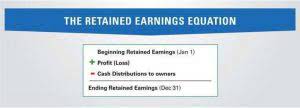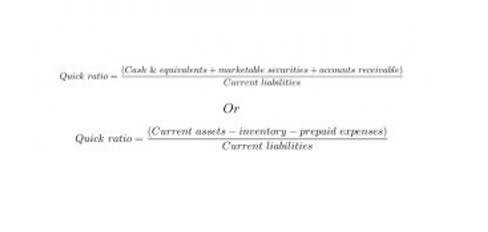
Contra accounts are used in accounting to provide a contra revenue definition more accurate picture of a company’s financial position. They are used to reduce the value of an asset or liability account to its net balance. It ensures that financial statements accurately reflect a company’s financial position. For instance, the “Accumulated Depreciation” contra account offsets the value of fixed assets like machinery or buildings, reflecting their reduced value over time due to wear and tear.
Financial Accounting for Rebates
- The differentiation is significant because it affects the interpretation of a company’s financial health.
- For example, this analysis might indicate that your business has product quality problems or servicing issues that can be corrected.
- From studying the basics of debit and credit, balance sheet accounts have a healthy balance.
- Furthermore, if you subsequently pay off that debt early and capture a discount, the contra liability account — Discount Notes Payable — would record those savings.
- It is an account which is deducted from a company’s total, or gross, revenue, resulting in net revenue.
- Contra account accounting plays a crucial role in financial accounting by offsetting the balance of another account.
In summary, the contra revenue account plays a crucial role in bookkeeping by mitigating unforeseen losses and clearly understanding a business’s financial landscape. If this aligns with your business model, it’s advisable to document each refund, return, or discount in your contra revenue account. This practice aids in gaining a clearer perspective on the distinctions between your gross and net revenue. This occurs when the contra account is used to offset a credit balance in the related account. A contra account is subtracted from its related account on the financial statements, resulting in a net balance.
Contra Revenue Insights for Accurate Financial Reporting
Such contra accounts might include sales returns, sales allowances, and sales discounts. These accounts reflect any transactions that take revenue away from a company, therefore giving a more accurate picture of a company’s financial health. Contra revenue is a general ledger account with a debit balance that reduces the normal credit balance of a standard revenue account to present the net value of sales generated by a business on its income statement. Examples of revenue contra accounts are Sales Discounts, Returns and Allowances.
What is the Impact of Contra Revenue on Net Income?
- For instance, if a company purchases equipment for $100,000 with a useful life of 10 years, straight-line depreciation results in an annual expense of $10,000.
- These accounts will typically help track sales discounts, product returns, and allowances (e.g., a price reduction for a good with minor defects).
- The treasury stock account, which is a deduction from equity since it represents the sum paid by a firm to purchase back its stock, is an example of a counter account within equity.
- Then, when the employee-paid portion of the expense is paid to the company by employees, these reimbursements are recorded in a benefits contra expense account.
- The list of asset accounts on your general ledger and balance sheet conveys the combined, potential value of all of the tangible and intangible items that your organization possesses.
- In revenue reporting, contra accounts like sales returns and allowances adjust gross sales to present net sales, ensuring revenue figures are not overstated.
When a product is sold with a rebate offer, the company estimates the number of rebates that will be claimed based on historical data and current market trends. This estimated liability is recorded at the time of sale, reducing the revenue recognized. As customers submit their rebate claims, the liability account is reduced, and the cash or accounts payable is adjusted accordingly.


Another type of contra account is known as “contra revenue,” which is used to adjust gross revenue to calculate net revenue, i.e. the “final” revenue figure listed on the income statement. The allowance for doubtful accounts is used income statement to reduce the net income by the estimated amount of uncollected receivables. This account helps to give a more accurate picture of the company’s financial position. Contra revenue affects the income statement by reducing gross sales, ultimately influencing the net sales figure. This, in turn, can impact profitability and provide a better picture of a business’s financial health. Contra revenue represents the deductions from gross sales, providing insight into net revenue.
Why Use a Contra Account?
And currently, Show-Fleur anticipates that it could only sell each one for roughly $50 thousand, meaning the depreciation per vehicle is $100 thousand. Master accounting topics that pose a particular challenge to finance professionals. Examples of deferred unearned revenue include prepaid subscriptions, rent, insurance or professional service fees.

By presenting contra revenue items separately, financial statements provide a clearer picture of the company’s net revenue, which is the amount of revenue remaining after deducting these contra accounts. The company has a contra asset account for accumulated depreciation expense and a separate asset account for equipment cost. The contra asset account would be used to offset the equipment account on the balance sheet. For example, if the company purchased a computer for 1,000 and it had a five-year life expectancy using straight-line depreciation, the contra account would be debited for 200 each year (the 1,000 divided by 5 years). If customers return goods, the Sales Returns and Allowances account, a contra revenue account, is credited to offset the Sales account. To illustrate the use of contra accounts, consider a business accounting for bad debt expenses when customers fail to fulfill payment obligations.
Contra Assets Account Example

Understanding the distinction between contra revenue and operating expenses is fundamental for accurate financial reporting. Contra revenue accounts are used to record transactions that directly reduce revenue figures, such as sales returns, allowances, and discounts. These are not expenses incurred from operating activities but rather deductions from gross sales to arrive at net sales. Operating expenses, on the other hand, are costs related to the day-to-day functioning of a business, such as rent, utilities, and salaries. Contra revenue accounts play a vital role in accurate financial reporting by providing transparency about the various deductions from a company’s gross revenue.

Accurate Financial Reporting
- These are not expenses incurred from operating activities but rather deductions from gross sales to arrive at net sales.
- They are used to provide transparency in accounting by showing adjustments or reductions made to certain accounts.
- Regularly review these policies and adjust based on data-driven insights to align with market conditions and customer expectations.
- Contra revenue refers to deductions from your business’s gross sales, including sales returns, allowances, and discounts.
- In general, the use of contra accounts helps to provide a more accurate picture of a company’s financial position and performance by showing the net revenue, net sales, or net balance of an account.
They also help to provide a clear picture of a company’s financial health and performance. Online Bookkeeping In accounting, a contra account is a general ledger account that offsets the balance of another general ledger account. A contra account is used to reduce the value of an asset or liability account, which results in a net balance that reflects the true value of the account. For example, if a company has an equity account for treasury stock, they would also have a contra equity account to offset the balance in the treasury stock account. To manage contra revenue effectively, focus on strategies that minimize these occurrences and enhance profitability. Refine your return policies to be clear yet reasonable, balancing customer flexibility with business protection.


